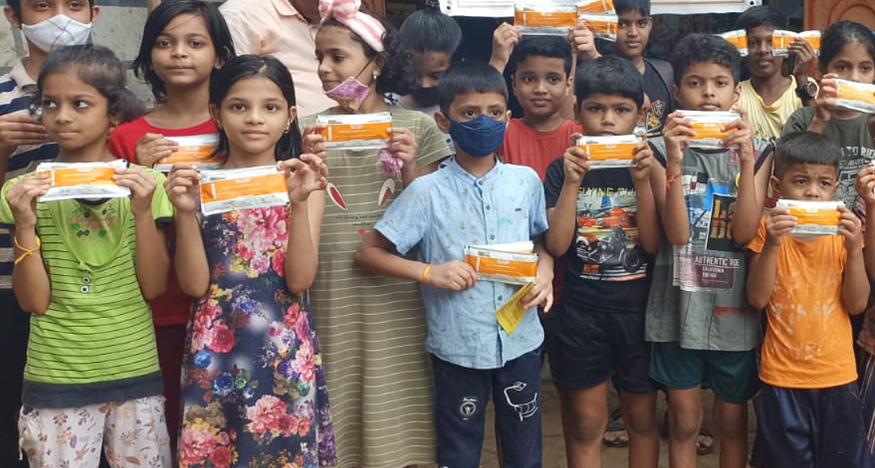In the ever-evolving landscape of healthcare, the treatment of malnutrition has witnessed remarkable strides in recent years. As we step into 2024, innovative approaches are reshaping the way we combat malnutrition, a pervasive global issue affecting millions. Among these breakthroughs, peanut butter-based therapeutic foods like Ready-to-Use Therapeutic Food (RUTF) and Ready-to-Use Supplementary Food (RUSF) are emerging as powerful tools in the fight against malnutrition.
The Evolution of Peanut Butter-Based Therapeutic Foods
Peanut butter, once considered a simple pantry staple, has taken on a new role as a transformative agent in addressing malnutrition. In the past, malnutrition treatment primarily relied on therapeutic milk, which posed challenges in terms of storage, distribution, and cultural acceptance. The introduction of peanut butter-based therapeutic foods marked a paradigm shift, providing a convenient, nutrient-dense solution that is not only effective but also culturally sensitive.
Ready-to-Use Therapeutic Food (RUTF)
RUTF, often referred to as “miracle food,” is a high-energy, nutrient-dense paste specifically designed to treat severe acute malnutrition in children. Comprising a blend of peanuts, milk powder, sugar, and essential vitamins and minerals, RUTF requires no preparation or refrigeration, making it an ideal solution for communities with limited resources.
The innovative aspect of RUTF lies in its ability to address multiple dimensions of malnutrition. Its balanced composition targets both macronutrient and micronutrient deficiencies, promoting rapid weight gain and supporting overall nutritional recovery. This revolutionary product has become a cornerstone in the battle against severe acute malnutrition, drastically improving recovery rates and reducing mortality in affected populations.
Ready-to-Use Supplementary Food (RUSF)
Building on the success of RUTF, the development of Ready-to-Use Supplementary Food (RUSF) represents another milestone in malnutrition treatment. RUSF is designed to address moderate acute malnutrition and prevent its progression to severe stages. This supplementary food is less energy-dense than RUTF, providing a suitable intervention for children who require additional nutrients but do not exhibit severe symptoms.
The beauty of RUSF lies in its versatility. It can be incorporated into diverse diets and cultural preferences, making it more adaptable to different communities. This flexibility enhances the acceptance of the intervention, a critical factor in the success of any public health initiative. By focusing not only on nutritional efficacy but also on cultural relevance, RUSF is contributing to a more holistic approach to malnutrition treatment.
Community Engagement and Empowerment:
One of the innovative aspects of the new wave of malnutrition treatments is the emphasis on community engagement and empowerment. Unlike traditional approaches that are often centered on top-down interventions, the use of peanut butter-based therapeutic foods encourages active community participation.
Local production of RUTF and RUSF has been championed as a sustainable solution. This approach not only addresses the logistical challenges of distribution but also fosters a sense of ownership within communities. By involving local populations in the production process, these innovations contribute to the development of self-sufficient and resilient healthcare systems.
Challenges and Future Directions:
While the innovations in malnutrition treatment have undoubtedly made significant strides, challenges persist. Issues such as accessibility, affordability, and the need for ongoing research and development are critical considerations for the continued success of these interventions. Efforts must be made to ensure that the benefits of these innovations reach the most vulnerable populations worldwide.
Looking ahead, the integration of advanced technologies, such as precision nutrition and personalized medicine, holds promise for refining malnutrition treatment further. Tailoring interventions to individual needs based on genetic, environmental, and lifestyle factors could revolutionize the field, providing more targeted and effective solutions.
As we delve into 2024, the innovations in malnutrition treatment, particularly those centered around peanut butter-based therapeutic foods like RUTF and RUSF, offer a beacon of hope for millions of individuals battling malnutrition. These advancements not only address the immediate nutritional needs of affected populations but also foster community engagement, empowerment, and sustainability.
The journey to eradicate malnutrition is ongoing, and these innovations represent a significant leap forward. By combining scientific rigor with cultural sensitivity and community involvement, the global health community is paving the way for a healthier, more nourished future for generations to come. At Nuflower, fighting malnutrition is at the core of our values and we are constantly innovating to fight child malnutrition and make the world a healthier place.

